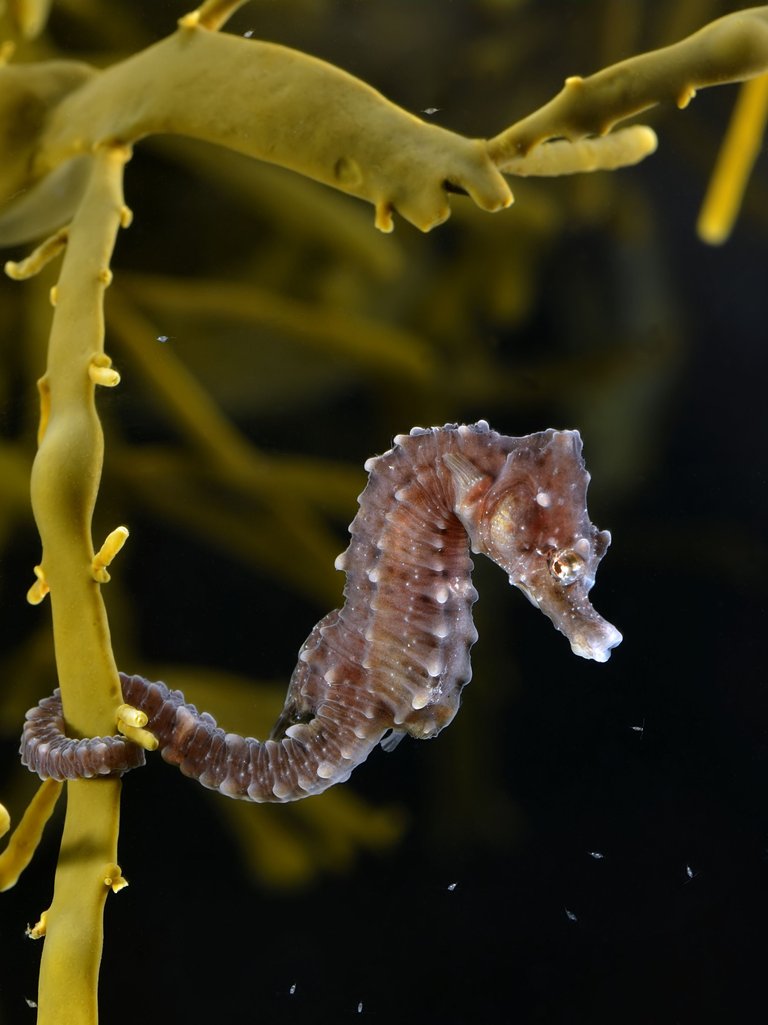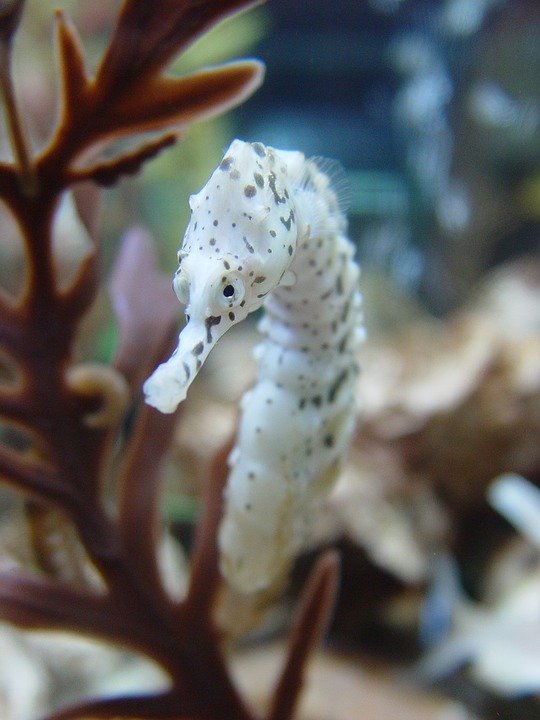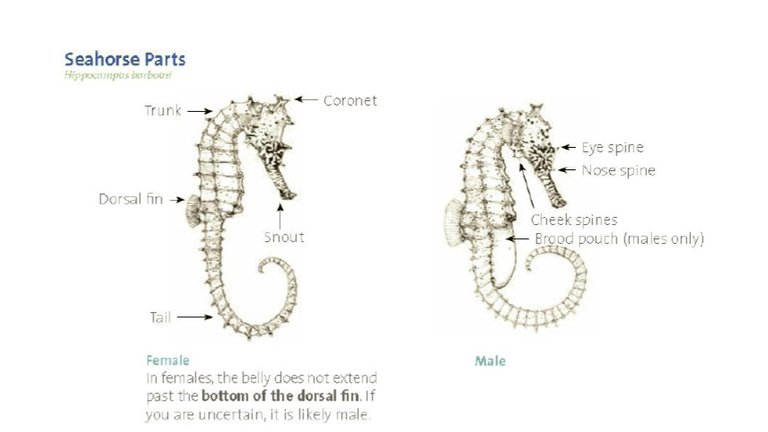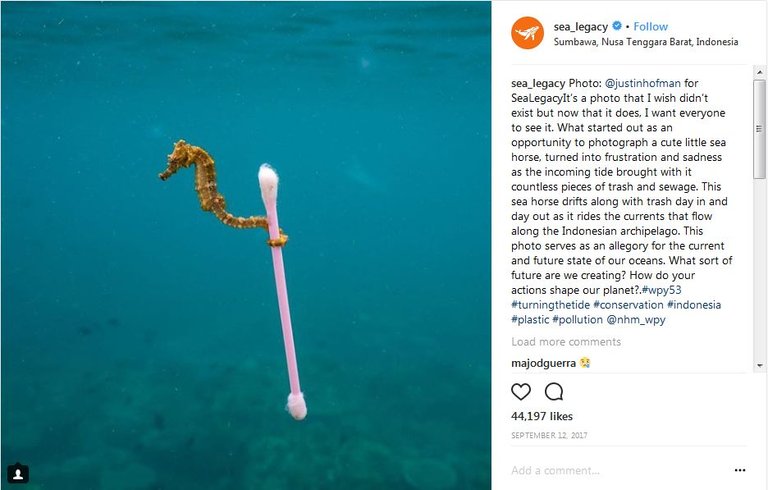When I was a kid I was fascinated whenever I saw seahorses. Delicate, cute little creatures looking so peaceful and sweet.

According to the IUCN Red List1, 12 species are Vulnerable, and two are Endangered, but 17 other species are listed as Data Deficient. This means we do not know enough about them to assess their conservation status.
source
Seahorses are very important for the ocean ecosystems
They make their homes in seaweeds and coral reefs, feeding on bottom-dwelling organisms.
I aim to post a series of articles regarding the sea horse species, in order to raise awareness and ultimately to figure out how we can help protect seahorses.
What are seahorses?
Seahorses are fishes, with gills, fins and a swim-bladder. They comprise of the genus (Hippocampus) from the family Sygnathidae.
Hippocampus comes from Ancient Greek hippos (ίππος, hippos) which means ‘horse’ and ‘kampos’ (κάμπος) which means sea monster
In Greek mythology2 Poseidon, the Greek God of the sea used to travel in a chariot which was drawn by fierce seahorses. The hippocampus would be depicted as a big animal with the head of a horse and a tail of a fish.
source: Sea Horse by freegreatpicture.com CC0 public comain

How many different species of seahorses are there?
It is unclear how many different species exist and there are disagreements between scientists about the exact number. Many seahorse species are superficially similar in appearance as per the Case Study by the University of British Columbia and the IUCN global authority (dedicated to the conservation of this species) officially recognizes 41 seahorse species3
How do the seahorses look like?
Their heads are positioned at their right angle and they have a grasping tail. They have bony plates attached on their body and some species have bony bumps protruding.
It has been observed that seahorses may change their colour in order to camouflage and blend with their environment.
source
Seahorses appear to be the fusion of various different animals. The have a horse-like head, monkey-like tail, and kangaroo-like pouch. In fact, even their eyes can be likened to those of a chameleon in that they move independently of each other and in all directions

Their size varies from the tiny pygmy seahorses (less than 2 centimeters) to the Australian big-bellied seahorse that can be up to more than 30 centimeters.
Where do seahorses live?
Seahorses live in tropical waters, among sea grass beds and coral reefs.
Seahorses range roughly from 50 degrees north to 50 degrees south latitude, with most species occurring in the West Atlantic and the IndoPacific region (see map - blue shading denotes where seahorses are found. Source: Riley Pollom/Project Seahorse). Habitat degradation is a real threat to seahorse populations as they mainly inhabit shallow, coastal areas which are highly influenced by human activities.
The evolution of Sea Horses
Sea horse fossils have been found that have been dated back about 13 million years ago.4 Found in Slovenia, they represent the oldest known record of seahorse species.
What do the seahorses feed on?
The seahorses have a very inefficient digestive system (thus they have actually no teeth and no stomach). They are constantly eating and they suck whichever comes close enough as they are usually waiting in ambush. They use their long snouts for sucking any small fish or crustaceans will fit their snout.
How do they swim?
The adults have only two tiny fins on their body as well as a dorsal fin and a tiny anal fin. They swim using their pectoral finds for stability and they are now known for their speed, but mostly for their camouflage and maneuvers for escaping when necessary.
What are the major threats for seahorses?
Seahorses are used as Chinese medicines, souvenirs, tonic food and are often traded as aquarium fishes. As informed by the SeaHorse Project, at times aquarium seahorses are wild-caught and they are also used in jewelry (!) key chains etc.
The pollution of the coral reefs, or human activities (such as fishing with the intention to catch shrimps) are another very serious threat for the seahorses.
How much sadness can a single photo show
Justin Hofman5 was leading an expedition through Borneo when a small group broke off for some impromptu snorkeling near the town of Sumbawa Besar.
Seahorses ride the ocean currents by grasping floating objects with their tails. What began as amusement watching the tiny fish grasping bits of sea grass coming in with the tide turned to anger as plastic and other unnatural debris began to overtake the scene.

This photo meant to be an image of a cute little sea creature but sadly it turned out to be a symbol of ocean pollution and makes us all wander about the future.
“It’s a photo6 that I wish didn’t exist but now that it does I want everyone to see it,” he wrote on Instagram. “What started as an opportunity to photograph a cute little sea horse turned into one of frustration and sadness as the incoming tide brought with it countless pieces of trash and sewage. This photo serves as an allegory for the current and future state of our oceans.”

In the next part I will be posting regarding their conservation and reproduction methods.

If you are interesting into taking action for seahorse conservation, visit iSeahorse page to see what you can do to help protect seahorses!
Source: “The life, history and ecology of seahorses in the Philippines”. [pdf]
in support of eventual CITES implementation for seahorses in the Philippines
Compiled by Charity Mae Apale1,2 and Sarah Foster1
(1Project Seahorse and 2ZSL-PH)
(Most text extracted from a review of seahorse biology and ecology by
Foster & Vincent 2004, with updates)Source: Case Studey by Sarah Foster, Project Seahorse by the University of British Columbia [pdf] Mexico 2008
source – the IUCN Seahorse, Pipefish & Stickleback Specialist Group

Being A SteemStem Member
I am honored and very happy! Thank you!
Πολύ ωραίο άρθρο, μου αρέσει πολύ ο ιππόκαμπος!
Ευχαριστώ πολύ, και σε μένα! Θα δημοσιεύσω άλλα 1-2 άρθρα με περισσότερες λεπτομέρειες για αυτούς : )
kalimera katerina poli wraio!!!
Amazing little creatures and insanely ubiquitous, hard to believe they're fish!
True, I was also surprised :)
Thanks for visiting!
Είναι πολύ κρίμα που έχουμε κάνει τον βυθό των θαλασσών ένα τεράστιο σκουπιδότοπο και σκοτώνουμε καθημερινά αυτά τα υπέροχα πλάσματα...
Έτσι ακριβώς..
beautiful animals, in my country this animal is much in hurry and made the drug, and also made the wall decoration, which I am afraid that if the hunt is done continuously could endanger the sea horse, and can mengangu other ecosystemmm, thank you for sharing
Thank you, yes; this is exactly what I am talking about.
Ooo very beutifull and Nuture post i love it